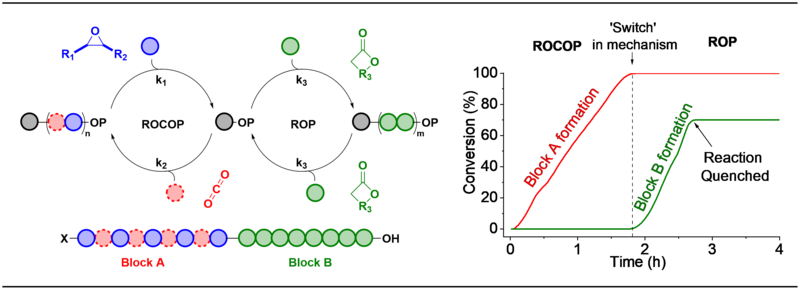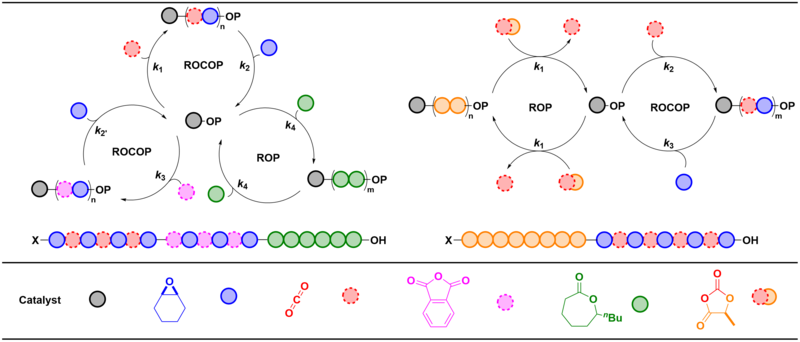Discovering how to selectively polymerize monomer mixtures to give well-controlled copolymers is still a fundamental challenge in polymer synthesis. Solving this problem could provide an efficient means to deliver reproducible chain sequences, important both in terms of polymer chemistry and physics understanding and to improve materials properties. In 2014, we reported a form of switchable polymerization catalysis whereby mixtures of monomers, such as epoxides, carbon dioxide, lactones and anhydrides, are selectively transformed, accessing different catalytic cycles, into specific and single copolymer chain sequences. The method efficiently and quantitatively produces completely new classes of multi-block polyesters, -ethers and –carbonates. These new copolymer sequences would be very difficult and sometimes impossible to access by any other means. Both the repeat unit sequence and polymer structure are controlled by manipulating the reaction conditions. In switchable polymerization catalysis, the slower polymerization frequently occurs before the faster reaction (rate differences can span orders of magnitude): this surprising result contravenes conventional monomer reactivity theories. We used detailed kinetics, structure-activity studies, operando spectroscopy and DFT models to understand the factors governing selectivity. We propose a switchable catalysis mechanism whereby monomer enchainment order is governed by both the chain end group stability and lability; both factors can be controlled externally. With this mechanistic insight, it’s straightforward to direct the catalyst into a desired catalytic cycle using the presence or absence of monomers as the switch. The switches between polymerization cycles are typically rapid and reversible allowing for multi-block polymer patterning.

We, and others worldwide, have now shown that other types of catalyst obey the ‘rules’ and mechanism for switchable polymerizations. We have investigated catalysts comprising different transition metals and main group elements (Groups 1-13) and used them to deliver new block and copolymers. Other researchers have applied different metallic, organometallic and organocatalysts in related switchable polymerization catalyses. These polymerizations also tend to be rather substrate tolerant, working with different lactones, epoxides, anhydrides, lactides, cyclic carbonates and carbon dioxide. The switchable polymerization method can be easily combined with sequential monomer additions, this means it can deliver up to 27 block sequences encoding ABA, ABC or ABCBA patterns. Our research team continues to develop new switchable polymerizaiton catalysts and to study their performances using operando spectroscopy (IR and NMR), kinetic analyses, investigations into copolymer structures and computational models to rationalize the data. Active on-going areas include increasing activity, understanding substrate scope, accessing new polymer structures and correlating polymer structure-activity performances to direct the catalysis.
